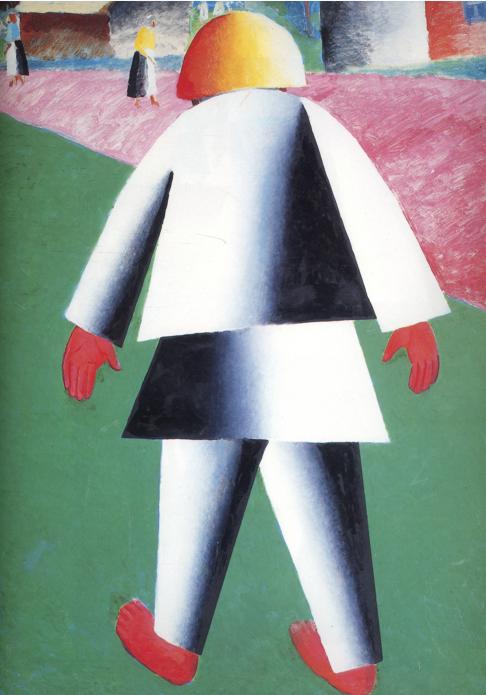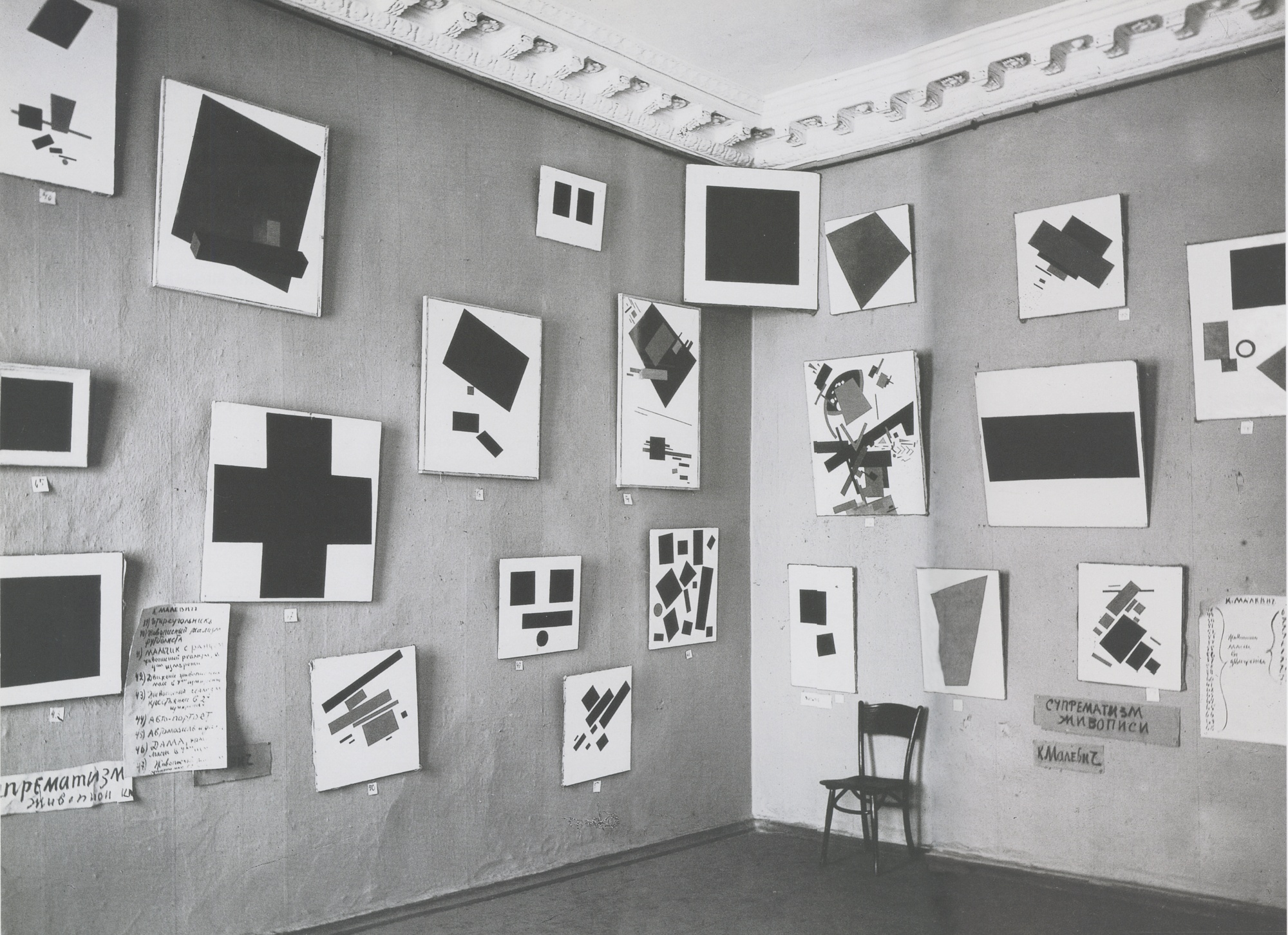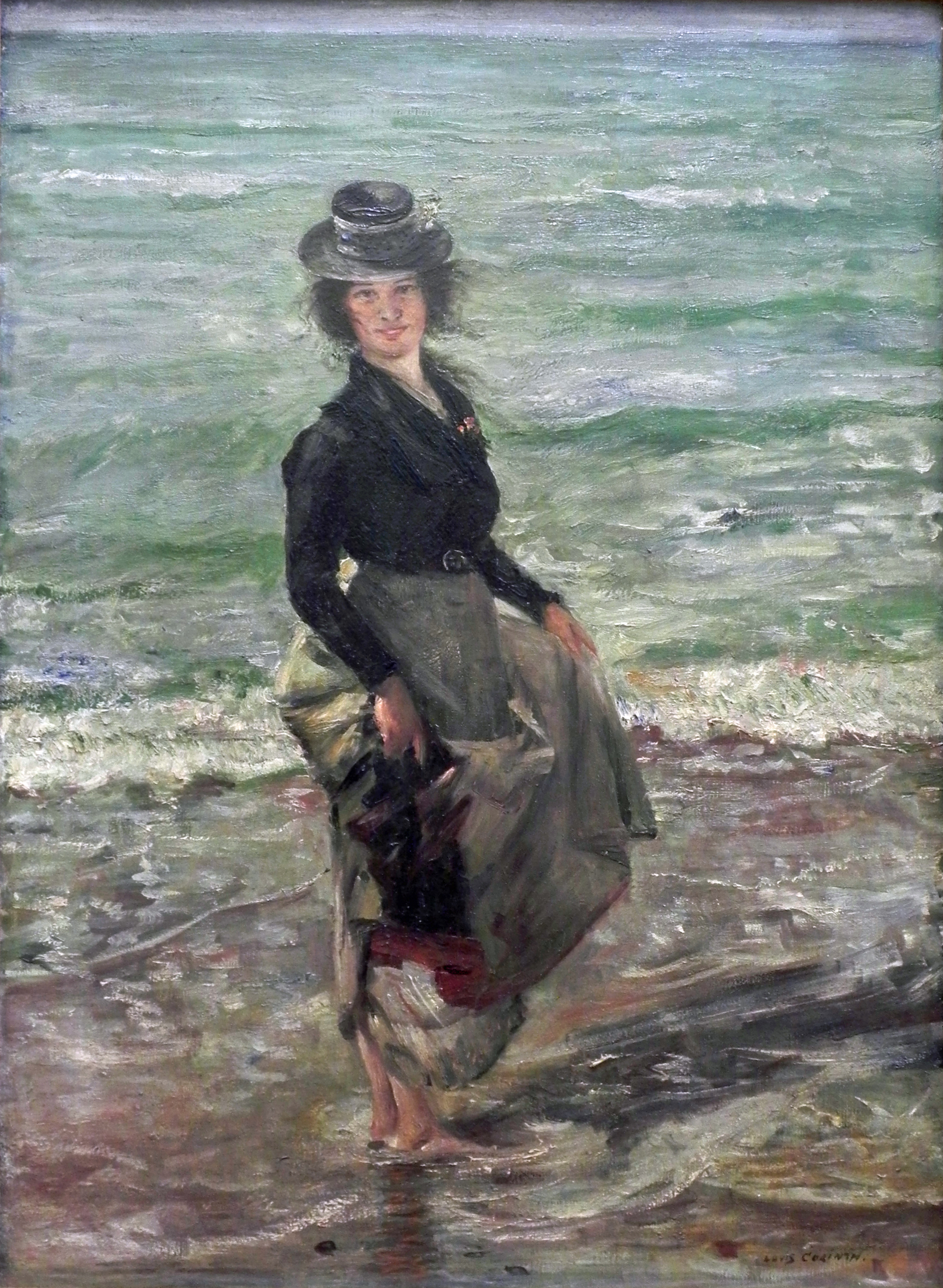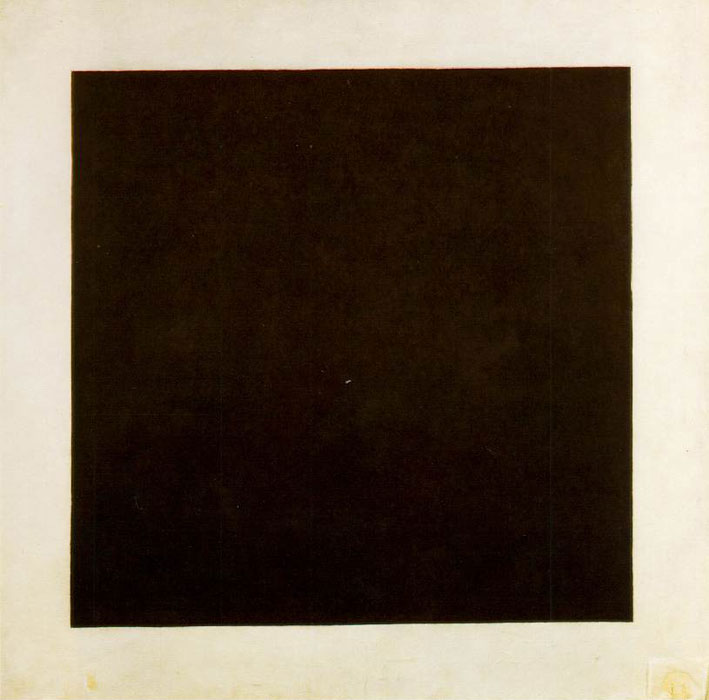|
White On White (Malevich, 1918)
''Suprematist Composition: White on White'' (1918) is an abstract oil-on-canvas painting by Kazimir Malevich. It is one of the more well-known examples of the Russian Suprematism movement, painted the year after the October Revolution. Part of a series of "white on white" works begun by Malevich in 1916, the work depicts a white square, portrayed off-centre and at an angle on a ground which is also a white square of a slightly warmer tone. The work measures . Malevich dispenses with most of the characteristics of representational art, with no sense of colour, depth, or volume, leaving a simple monochrome geometrical shape, not precisely symmetrical, with imprecisely defined boundaries. Although the artwork is stripped of most detail, brush strokes are evident in this painting and the artist tried to make it look as if the tilted square is coming out of the canvas. Malevich intended the painting to evoke a feeling of floating, with the colour white symbolising infinity, and ... [...More Info...] [...Related Items...] OR: [Wikipedia] [Google] [Baidu] |
Kazimir Malevich
Kazimir Severinovich Malevich ; german: Kasimir Malewitsch; pl, Kazimierz Malewicz; russian: Казими́р Севери́нович Мале́вич ; uk, Казимир Северинович Малевич, translit=Kazymyr Severynovych Malevych ., group=nb (Запись о рождении в метрической книге римско-католического костёла св. Александра в Киеве, 1879 год // ЦГИАК Украины, ф. 1268, оп. 1, д. 26, л. 13об—14. – 15 May 1935) was a ... [...More Info...] [...Related Items...] OR: [Wikipedia] [Google] [Baidu] |
Berlin
Berlin ( , ) is the capital and largest city of Germany by both area and population. Its 3.7 million inhabitants make it the European Union's most populous city, according to population within city limits. One of Germany's sixteen constituent states, Berlin is surrounded by the State of Brandenburg and contiguous with Potsdam, Brandenburg's capital. Berlin's urban area, which has a population of around 4.5 million, is the second most populous urban area in Germany after the Ruhr. The Berlin-Brandenburg capital region has around 6.2 million inhabitants and is Germany's third-largest metropolitan region after the Rhine-Ruhr and Rhine-Main regions. Berlin straddles the banks of the Spree, which flows into the Havel (a tributary of the Elbe) in the western borough of Spandau. Among the city's main topographical features are the many lakes in the western and southeastern boroughs formed by the Spree, Havel and Dahme, the largest of which is Lake Müggelsee. Due to its l ... [...More Info...] [...Related Items...] OR: [Wikipedia] [Google] [Baidu] |
1918 Paintings
This year is noted for the end of the First World War, on the eleventh hour of the eleventh day of the eleventh month, as well as for the Spanish flu pandemic that killed 50–100 million people worldwide. Events Below, the events of World War I have the "WWI" prefix. January * January – 1918 flu pandemic: The "Spanish flu" ( influenza) is first observed in Haskell County, Kansas. * January 4 – The Finnish Declaration of Independence is recognized by Soviet Russia, Sweden, Germany and France. * January 9 – Battle of Bear Valley: U.S. troops engage Yaqui Native American warriors in a minor skirmish in Arizona, and one of the last battles of the American Indian Wars between the United States and Native Americans. * January 15 ** The keel of is laid in Britain, the first purpose-designed aircraft carrier to be laid down. ** The Red Army (The Workers and Peasants Red Army) is formed in the Russian SFSR and Soviet Union. * January 18 - The Historic Co ... [...More Info...] [...Related Items...] OR: [Wikipedia] [Google] [Baidu] |
Black Square (painting)
''Black Square'' (also known as ''The Black Square'' or ''Malevich's Black Square'') is an iconic painting by Kazimir Malevich. The first version was done in 1915. Malevich made four variants of which the last is thought to have been painted during the late 1920s or early 1930s. ''Black Square'' was first shown in The Last Futurist Exhibition 0,10 in 1915. The work is frequently invoked by critics, historians, curators, and artists as the "zero point of painting", referring to the painting's historical significance and paraphrasing Malevich. History The Black Square first appeared as part of a design for a stage curtain in the 1913 Russian Futurist/Cubo-Futurist opera '' Victory over the Sun'' by Velimir Khlebnikov, Aleksei Kruchyonykh, and Mikhail Matyushin, for whom he did the costume and stage designs. Malevich painted his first ''Black Square'' in 1915. He made four variants, of which the last is thought to have been painted during the late 1920s or early 1930s, despite ... [...More Info...] [...Related Items...] OR: [Wikipedia] [Google] [Baidu] |
Betsey Cushing Roosevelt Whitney
Betsey Maria Cushing Whitney (May 18, 1908 – March 25, 1998) was an American philanthropist, a former daughter-in-law of President Franklin D. Roosevelt, and later wife of U.S. Ambassador to the Court of St James's, John Hay Whitney. Early life She was the middle daughter of prominent neurosurgeon Dr. Harvey Williams Cushing and his wife Katharine Stone Crowell, who hailed from a socially prominent Cleveland family. Dr. Cushing, who was descended from Matthew Cushing, an early settler of Hingham, Massachusetts, served as professor of surgery at Johns Hopkins, Harvard and Yale Universities, and established the family in Boston. Though she had two brothers, she and her two sisters became known in the social world as the "Cushing Sisters", heralded for their charm and beauty and schooled by their social-climbing mother to pursue husbands of wealth and prominence. All three Cushing sisters married into wealth and prominence: Her older sister, Mary "Minnie", married Vincent Astor ... [...More Info...] [...Related Items...] OR: [Wikipedia] [Google] [Baidu] |
Lower Saxony State Museum
The Lower Saxon State Museum Hanover (german: Niedersächsisches Landesmuseum Hannover, italics=unset, or simply ) is the state museum of Lower Saxony in Hanover, Germany. Situated adjacent to the New Town Hall, the museum comprises the state gallery (), featuring paintings and sculptures from the Middle Ages to the 20th century, and departments of archaeology, natural history and ethnology. The museum includes a vivarium with fish, amphibians, reptiles and arthropods. History Originally the Museum of Art and Science () inaugurated in 1856 in the presence of George V of Hanover based in the present-day Hanover Arthouse (), it was later renamed Museum of the Province of Hanover, or simply Provincial Museum. The museum soon ran out of space for its art collections, prompting the construction of the current building, designed by Hubert Stier in a Neo-Renaissance style, on the edge of the Maschpark in 1902. The building's relief frieze, titled "Key Moments in the Evolution of H ... [...More Info...] [...Related Items...] OR: [Wikipedia] [Google] [Baidu] |
Hugo Häring
Hugo Häring (11 May 1882 – 17 May 1958) was a German architect and architectural writer best known for his writings on "organic architecture", and as a figure in architectural debates about functionalism in the 1920s and 1930s, though he had an important role as an expressionist architect. Häring was born in Biberach an der Riß, in the Kingdom of Württemberg. A student of the great Theodor Fischer, he took the view that each building should be uniquely developed according to the specific demands of the site and client. Few of Häring's designs were built but he was a strong influence on his friend and colleague Hans Scharoun. One built design was a contribution to the Siemensstadt housing project in Berlin from 1929 through 1931, which was master-planned by Scharoun. Häring was a founding member of both The Ring and CIAM. He was married to actress Emilia Unda in 1918. the couple later divorced and he married actress Roma Bahn in 1950. He died in Göppingen, aged 76. ... [...More Info...] [...Related Items...] OR: [Wikipedia] [Google] [Baidu] |
Saint Petersburg
Saint Petersburg ( rus, links=no, Санкт-Петербург, a=Ru-Sankt Peterburg Leningrad Petrograd Piter.ogg, r=Sankt-Peterburg, p=ˈsankt pʲɪtʲɪrˈburk), formerly known as Petrograd (1914–1924) and later Leningrad (1924–1991), is the second-largest city in Russia. It is situated on the Neva River, at the head of the Gulf of Finland on the Baltic Sea, with a population of roughly 5.4 million residents. Saint Petersburg is the fourth-most populous city in Europe after Istanbul, Moscow and London, the most populous city on the Baltic Sea, and the world's northernmost city of more than 1 million residents. As Russia's Imperial capital, and a historically strategic port, it is governed as a federal city. The city was founded by Tsar Peter the Great on 27 May 1703 on the site of a captured Swedish fortress, and was named after apostle Saint Peter. In Russia, Saint Petersburg is historically and culturally associated with t ... [...More Info...] [...Related Items...] OR: [Wikipedia] [Google] [Baidu] |
UNOVIS
UNOVIS (also known as MOLPOSNOVIS and POSNOVIS) was a short-lived but influential group of artists, founded and led by Kazimir Malevich at the Vitebsk Art School in 1919. Initially formed by students and known as MOLPOSNOVIS, the group formed to explore and develop new theories and concepts in art. Under the leadership of Malevich they renamed to UNOVIS, chiefly focusing on his ideas on Suprematism and producing a number of projects and publications whose influence on the avant-garde in Russia and abroad was immediate and far-reaching.Essay: ''Black Square: In the Circle of Malevich and UNOVIS Group'' The group disbanded in 1922. The name UNOVIS is an |
Oil Painting
Oil painting is the process of painting with pigments with a medium of drying oil as the binder. It has been the most common technique for artistic painting on wood panel or canvas for several centuries, spreading from Europe to the rest of the world. The advantages of oil for painting images include "greater flexibility, richer and denser colour, the use of layers, and a wider range from light to dark". But the process is slower, especially when one layer of paint needs to be allowed to dry before another is applied. The oldest known oil paintings were created by Buddhist artists in Afghanistan and date back to the 7th century AD. The technique of binding pigments in oil was later brought to Europe in the 15th century, about 900 years later. The adoption of oil paint by Europeans began with Early Netherlandish painting in Northern Europe, and by the height of the Renaissance, oil painting techniques had almost completely replaced the use of tempera paints in the majority ... [...More Info...] [...Related Items...] OR: [Wikipedia] [Google] [Baidu] |
Constructivism (art)
Constructivism is an early twentieth-century art movement founded in 1915 by Vladimir Tatlin and Alexander Rodchenko. Abstract and austere, constructivist art aimed to reflect modern industrial society and urban space. The movement rejected decorative stylization in favor of the industrial assemblage of materials. Constructivists were in favour of art for propaganda and social purposes, and were associated with Soviet socialism, the Bolsheviks and the Russian avant-garde. Constructivist architecture and art had a great effect on modern art movements of the 20th century, influencing major trends such as the Bauhaus and De Stijl movements. Its influence was widespread, with major effects upon architecture, sculpture, graphic design, industrial design, theatre, film, dance, fashion and, to some extent, music. Beginnings Constructivism was a post-World War I development of Russian Futurism, and particularly of the 'counter reliefs' of Vladimir Tatlin, which had been exhibited ... [...More Info...] [...Related Items...] OR: [Wikipedia] [Google] [Baidu] |
Representational Art
Representation is the use of signs that stand in for and take the place of something else.Mitchell, W. 1995, "Representation", in F Lentricchia & T McLaughlin (eds), ''Critical Terms for Literary Study'', 2nd edn, University of Chicago Press, Chicago It is through representation that people organize the world and reality through the act of naming its elements. Signs are arranged in order to form semantic constructions and express relations. For many philosophers, both ancient and modern, man is regarded as the "representational animal" or '' animal symbolicum'', the creature whose distinct character is the creation and the manipulation of signs – things that "stand for" or "take the place of" something else. Representation has been associated with aesthetics (art) and semiotics (signs). Mitchell says "representation is an extremely elastic notion, which extends all the way from a stone representing a man to a novel representing the day in the life of several Dubliners". The ... [...More Info...] [...Related Items...] OR: [Wikipedia] [Google] [Baidu] |









